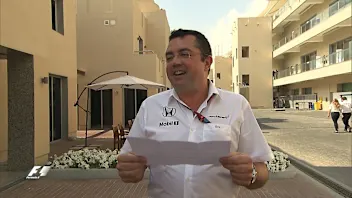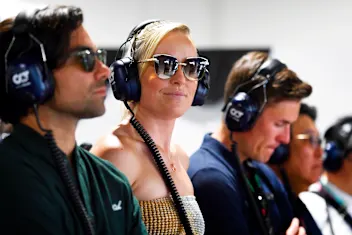From cutting curfews to grid penalties – 10 rule changes you need to know about for the 2023 F1 season
While F1’s rules are remaining largely the same in 2023 following last year’s major reset, there are still technical and sporting changes of note for the campaign ahead, as we explain in our pre-season rundown…
1. Ride height and diffusers adjusted
With some teams encountering porpoising upon the arrival of F1’s new-spec cars last year, which feature ground-effect aerodynamics, a set of floor-based flexibility and monitoring measures arrived for the second half of the 2022 season, and more have been outlined for 2023.
In short, four additional changes will come into play this year: floor edges have been raised by 15mm; the diffuser throat height has been raised; the diffuser edge stiffness has been increased; and an additional sensor has been mandated to more effectively monitor the porpoising phenomenon.
These adjustments should, in theory, make significant porpoising a thing of the past and, as such, keep the focus on the thrilling action that F1’s rules reset has delivered.
2. Stronger roll hoops after Zhou’s crash
Alongside the changes aimed at porpoising, there are tweaks to the safety standards for F1 car roll hoops after the frightening crash experienced by Zhou Guanyu at the start of the 2022 British Grand Prix, which involved his Alfa Romeo sliding along the track upside down.
The 2023 Technical Regulations now state that a rounded top is required on the roll hoop, which will reduce the chance of it digging into the ground during an accident, while they also ensure a minimum height for the point of application of the homologation test.
Additionally, there will be a new physical homologation test where the load pushes the roll hoop in a forward direction.
3. A reduction in the minimum car weight
F1 car weight was a major talking point ahead of the 2022 season, with teams up and down the grid battling to get as close as possible to the 798kg limit (without fuel) amid one of the biggest regulatory changes in the sport’s history.
As F1’s new era develops, a reduction of 2kg – to 796kg – is being implemented for 2023, meaning the designers will be trying to shave off even more weight from their latest challengers.
4. Revised mirrors to improve driver visibility
In an attempt to increase driver visibility, there will be a change to rear-view mirrors on F1’s 2023-spec cars, with the width of the reflective surface increasing by 50mm from 150mm to 200mm.
Following tests by Red Bull and Mercedes in Hungary and Belgium respectively last season, the entire grid got involved at the Dutch Grand Prix, and the changes have now been written into the regulations.
5. Double the number of Sprint events
An exciting development for 2023 sees the number of Sprint events doubled from three to six. Azerbaijan (Baku), Austria (Red Bull Ring), Belgium (Spa-Francorchamps), Qatar (Lusail), the United States (Circuit of The Americas) and Sao Paulo (Interlagos) are the venues chosen, following on from extensive research into their suitability.
Not only that, the format is changing – tweaks for this year mean the Sprint will effectively become a standalone feature of race weekends when the format is used, with the outcome bearing no impact on the grid for the Grand Prix itself.
Fridays will now include a practice session followed by a standard qualifying session to set the grid for Sunday’s Grand Prix. Saturdays will see practice replaced by an additional, shorter qualifying session called the Sprint Shootout. This will set the grid for the subsequent 100km Sprint.
Meanwhile, Sprint accident damage allowance will now be a fixed amount per team, for each race weekend that includes a Sprint session. The forfeit allowance amount for each Sprint will double to $300k from 2023 onwards, while all other Sprint damage allowances will be removed.
Alongside this, parc ferme rules on Sprint weekends are under review for 2023, with the aim of simplifying the set-up-locking process, after the FIA cited a “significant increase in parc ferme requests" between Friday’s qualifying session and Saturday’s Sprint.
6. Paddock working hours cut
The number of hours worked by F1 team members across race weekends will be reduced in upcoming seasons, with the third of three restricted periods (effective on Fridays) beginning an hour earlier this year, and another hour set to be knocked off in 2024.
To complement the move, the number of curfews permitted for the first (Wednesday) and second (Thursday) restricted periods will also be cut in half, from eight to four and six to three respectively, again with another cut planned for next year.
7. Qualifying format and DRS trials
A ‘Revised Qualifying Format’ (RQF) will take place at up to two events in 2023 “for the purpose of evaluating whether the revisions are suitable for subsequent championships” – as per the updated regulations.
This will see tyre compounds mandated for each stage of F1’s usual three-part qualifying session: hard tyres only in Q1; mediums tyres only in Q2; and, finally, soft tyres only in Q3. Intermediates and wets will be allowed if the RQF sessions are declared wet.
At RQF events, each driver may use no more than 11 sets of dry-weather tyres, four sets of intermediate tyres and three sets of wet-weather tyres. This compares to the normal weekend allowance of 13 sets of dry-weather tyres, four sets of intermediate tyres and three sets of wet-weather tyres.





